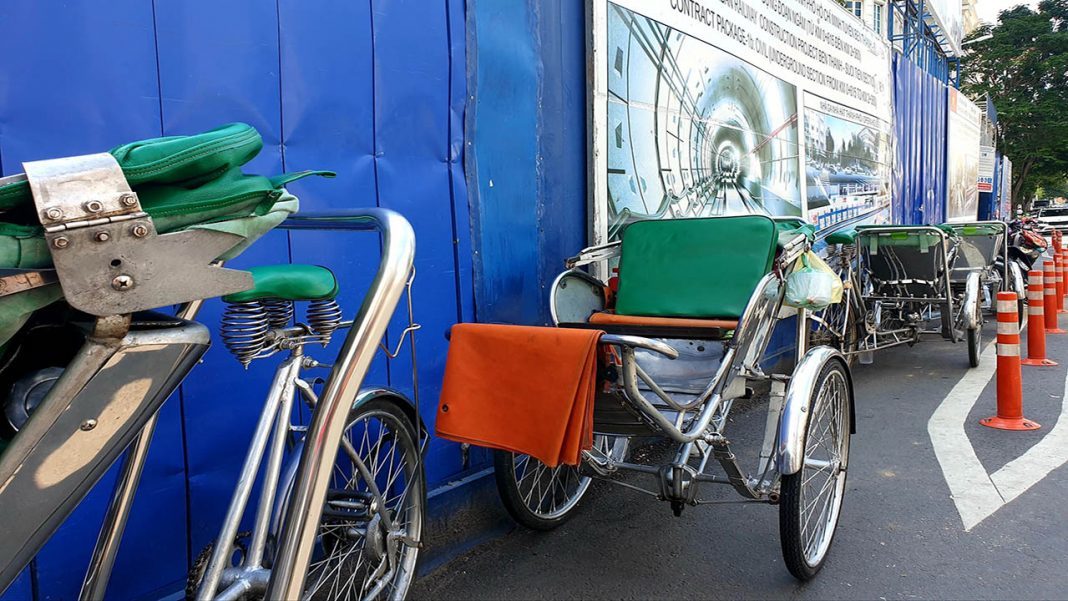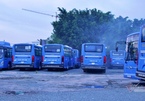
Empty tourist cycle (man-powered tricycle) in the heart of Saigon
Many local governments are looking to what HCMC has done to build their own economic plans. The HCMC authorities should therefore be at the forefront with the city so that it can play its leading role.
As soon as the HCMC authorities shelved some regulations on the first day of October to reopen the city after more than three months of stringent lockdown, hundreds of thousands of people left the city where they had sought a livelihood for their home provinces. Attempts to persuade them to stay by saying factories and firms would soon resume operation proved entirely futile.
“What can you do in your birthplace to earn your living?” This practical question has to be answered by the returnees because it is the very same question they had to ask themselves when they left their loved ones for the city to land a job. However, if they remained here in this city now, what could they do to survive?
Fewer lottery ticket sellers or shoe polishers can be found these days on the streets of Saigon. Bars, karaoke parlors and so on still remain closed. If hundreds of thousands of lottery ticket sellers, shoe polishers, waiters and waitresses in restaurants and eateries and the like listened to the advice to stay, would they be able to win a job in a factory or a company?
No comprehensive statistics are currently available on the professions of the returnees from HCMC, Dong Nai, Binh Duong and Long An provinces heading home in the Mekong Delta. Dong Thap Province is the only exception which has made public the figures. Of the 22,000 people who returned to Dong Thap, 65% said they were workers aged between 18-40, and 26% of them were self-employed persons. The majority of this 26% who claimed to be “self-employed” must have been lottery ticket sellers, hawkers or manual workers. And those who said they were “hired workers” might be either working in factories or in restaurants, eateries or karaoke parlors, etc. It is not certain now for even a “genuine” factory worker to hold down a job because the firm he/she works for may have gone bankrupt.
It has been almost a month since HCMC began to reopen its economy. The city’s vaccination coverage is high at present with almost all Saigonese aged 18 or more having received at least one shot and 72% two shots. It’s now time HCMC and some neighboring provinces took into account the return of “the fishing rod” to the poor from the provinces.
At an October 16 workshop on HCMC’s socioeconomic recovery and development during 2022-2025 presided over by Chairman Phan Van Mai, health and economic experts strongly suggested HCMC should boldly reopen its economy. This proposal was made relying on a high vaccination ratio and a large number of people who recovered from Covid-19, at almost 600,000. These figures may help reduce the pace of community infections as well as the number of hospitalized patients.
In reality, many cities worldwide have permitted economic and festive activities almost to the pre-Covid levels.
As a key driving force for both the southern region and Vietnam, HCMC is also a pioneer in piloting and carrying out innovative, breakthrough policies. Many local governments are looking to what HCMC has done to build their own economic plans. The HCMC authorities should therefore be at the forefront with the city so that it can play its leading role.
Source: SGT

Drinking rainwater, sleeping in buses: the lives of bus drivers, attendants
Becoming unemployed and running out of money, bus drivers and bus attendants have had to drink rainwater, and eat and sleep on buses, waiting for the day the bus station resumes operation.